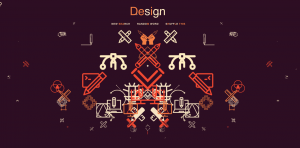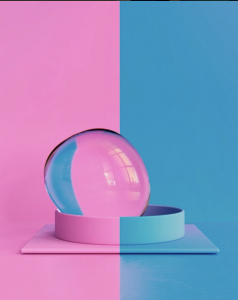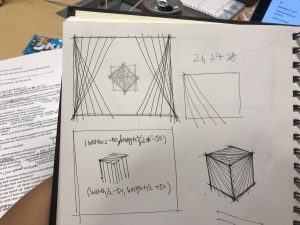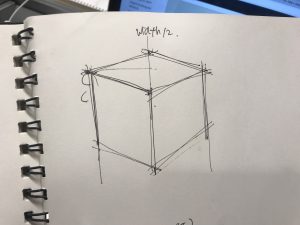//Yoon Young Kim
//Section E
//yoonyouk@andrew.cmu.edu
//Project07
var a = 50; //size of the rose curve
var nPoints = 100; //number of points on the curve
function setup(){
createCanvas(480, 480);
frameRate(10);
noLoop();
}
function drawRoseCurve() {
background(207, 212, 255); // blue background color
stroke(145, 85, 112); //dark purple outline color
strokeWeight(5);
fill(204, 120, 157); //dusky pink fill color
var t; //theta of the equation
push();
beginShape();
translate(width/2, height/2);
for(i = 0; i<mouseX; i++){ //number of points drawn based on the movement of mouseX
var t = map(i, 0, mouseX + 40, 0, TWO_PI); //polar equation for the Rose Curve
var r;
var n = 4; // number of petals - when n is even, the function turns to 2n, therefore will create 8 petals
r = a*cos(n*t); // drawing the Rose curve
x = r *cos(t); //converting from polar to Cartesian
y = r *sin(t); //converting from polar to Cartesian
vertex(x, y);
}
endShape();
pop();
}
function mouseMoved() {
a = a + 1; //increasing the size of the flower when the mouse moves
if(a>200){
a=50;
}
drawRoseCurve();
}I thought it was originally difficult to plug in the curve equations since we had to consider radians and Cartesian vs. polar equations. I wanted to do a rose curve because I was interested in how the lines would loop around in a flower like shape. In order to integrate the mouse movement with my curve I used the map function in order to determine the number of points of my curve. Therefore, as you move the mouse back and forth the loops will draw or undraw depending on the movement. Unfortunately, I was still unable to figure out how to make the entire curve close properly.
![[OLD FALL 2017] 15-104 • Introduction to Computing for Creative Practice](../../../../wp-content/uploads/2020/08/stop-banner.png)





